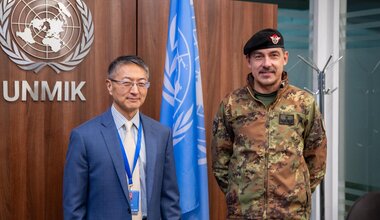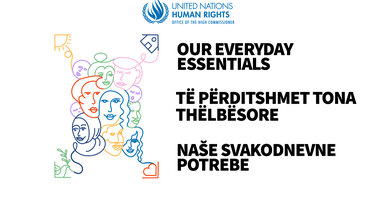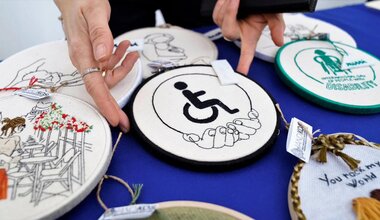The community that plays together stays together
Surrounded by crops, chickens and tractors in a quiet, rural part of Kosovo is the village of Vidaje/Vidanje - the “best village to live in”, according to 13-year-old Leonid Shllaku.
Leonid’s house is just across from a new playground that was built in 2016 for children in the mixed ethnic community. Prior to that there were no such grounds anywhere nearby and Leonid says he and his friends could only play in friends’ backyards.
“We did not have a proper playground. The playground is better than playing in yards, because in addition to soccer, we can also play basketball and other sports.”
The playground, which has a set of basketball hoops and football goals, is available for not only the 68 Kosovo Serb children and 94 Kosovo Albanian children who live in the village, but also 270 families from surrounding towns.
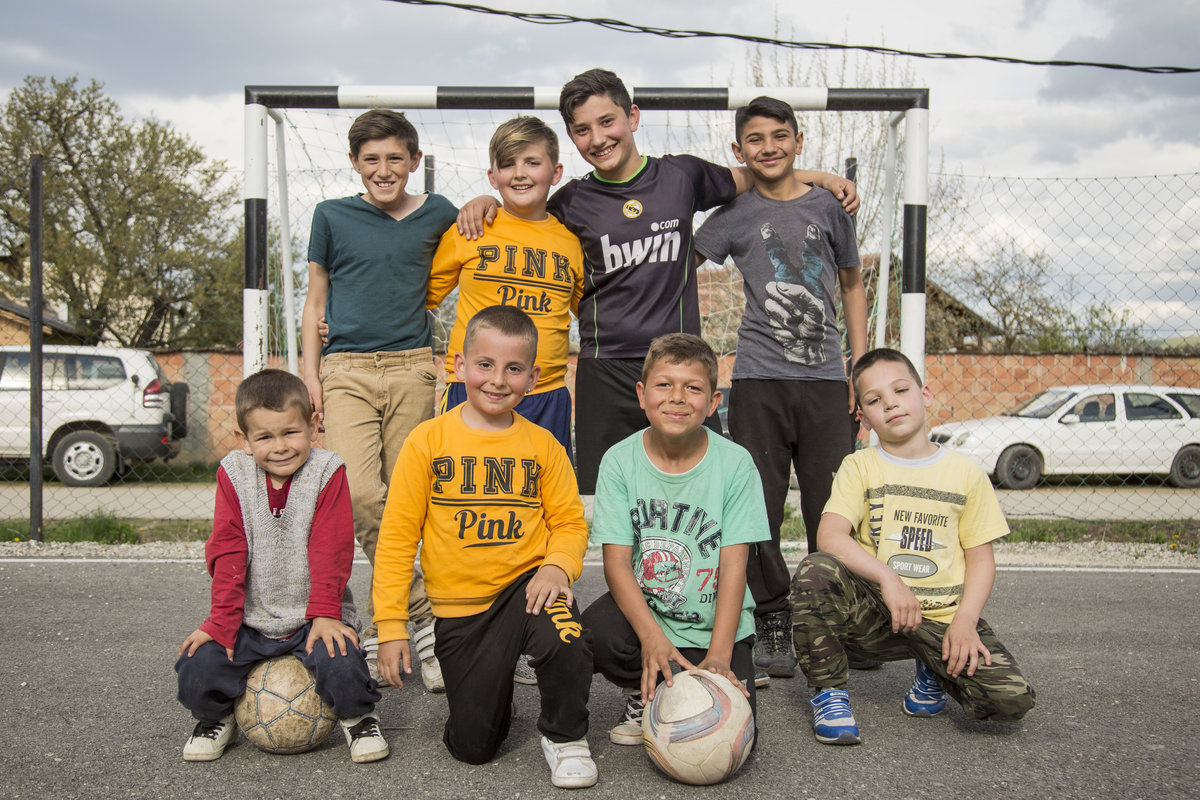
Leonid Shllaku (back row, second from left) and his friends enjoying the playground in their village of Vidaje/Vidanje.
“I play soccer, volleyball, basketball and other sports,” Leonid says.
“We come here to play almost every day.”
The football enthusiast says he has made a diverse group of friends during the process, whom he communicates with in a mixture of different languages – including English – as well as body language.
“I have more friends now from playing here. I have more Serb, Roma and Albanian friends now.”
Leonid’s father Agron Shllaku, who also has three daughters aged between seven and 14, says the playground has brought about a change in Vidaje/Vidanje, which is a returnee site where Kosovo Serbs who fled during the 1999 conflict later came back to return to their homes.
“It has brought the children together. This is where they meet and hang out. The situation is far better since the playground was built.”
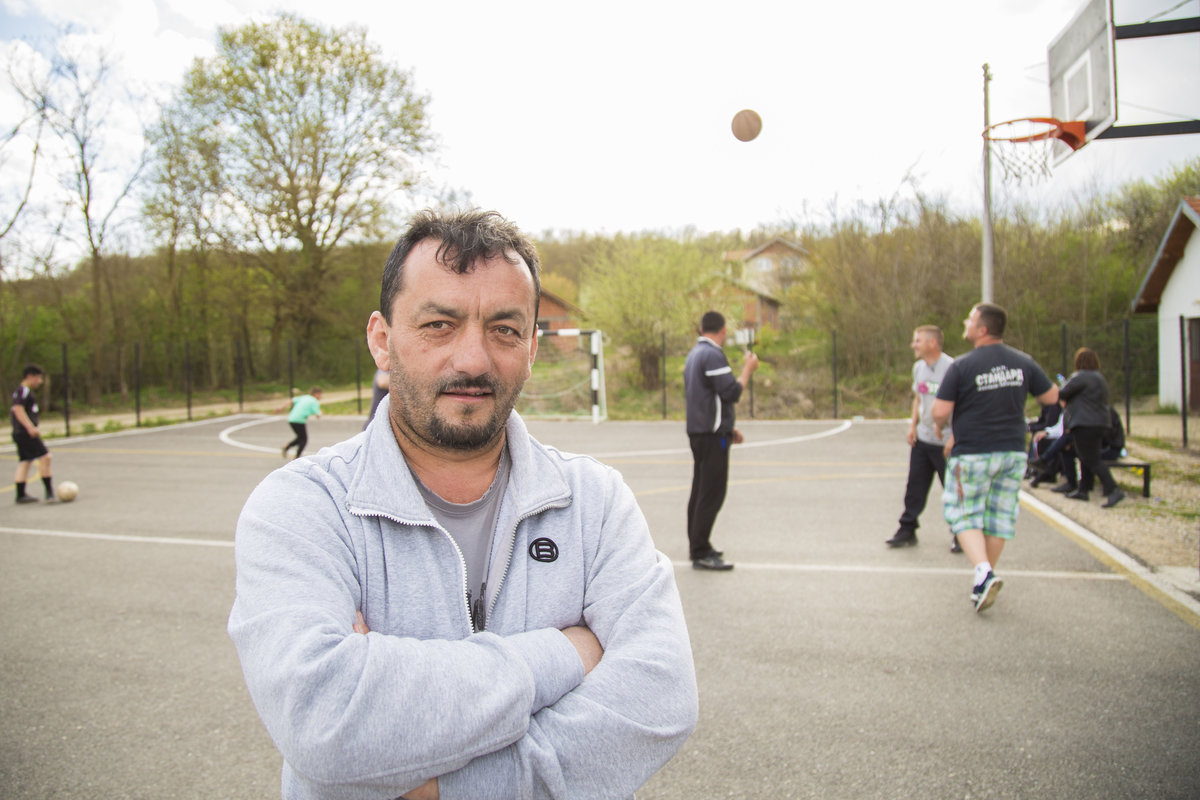
Agron Shllaku, whose son Leonid makes full use of the playground with his friends from different communities.
Shllaku says projects like the playground have helped knit the village together and he says there is almost no tension amongst the different communities.
“All communities have benefited from [the playground]. The good cooperation has resulted into more friendships.”
Milorad Žarković is the head of the community office of Klinë/Klina Muncipality, where the village is located. Žarković says the idea for the playground existed for a while until funds could be gathered to build it.
“If it were not for this stadium, the youngsters wouldn’t meet at all.
“I don't think they would learn each other's languages. It was one of the hardest thing for me to see that my children speak to their neighbors in English, as they are very young.”
Žarković left the village for Serbia during the 1999 war and only returned in 2004. The father and grandfather says it was extremely difficult to accept that, while communities from his generation could communicate in each other’s language, this is no longer the case. He says the playground has been of “enormous importance” to bring children from minority returnee communities close to the majority Albanian community.
“It changed a lot in a very short period. Before it was built, our children didn't play together, they had no place to meet. In a very short time, after the stadium was built, children became so close as if they knew each other for years.”
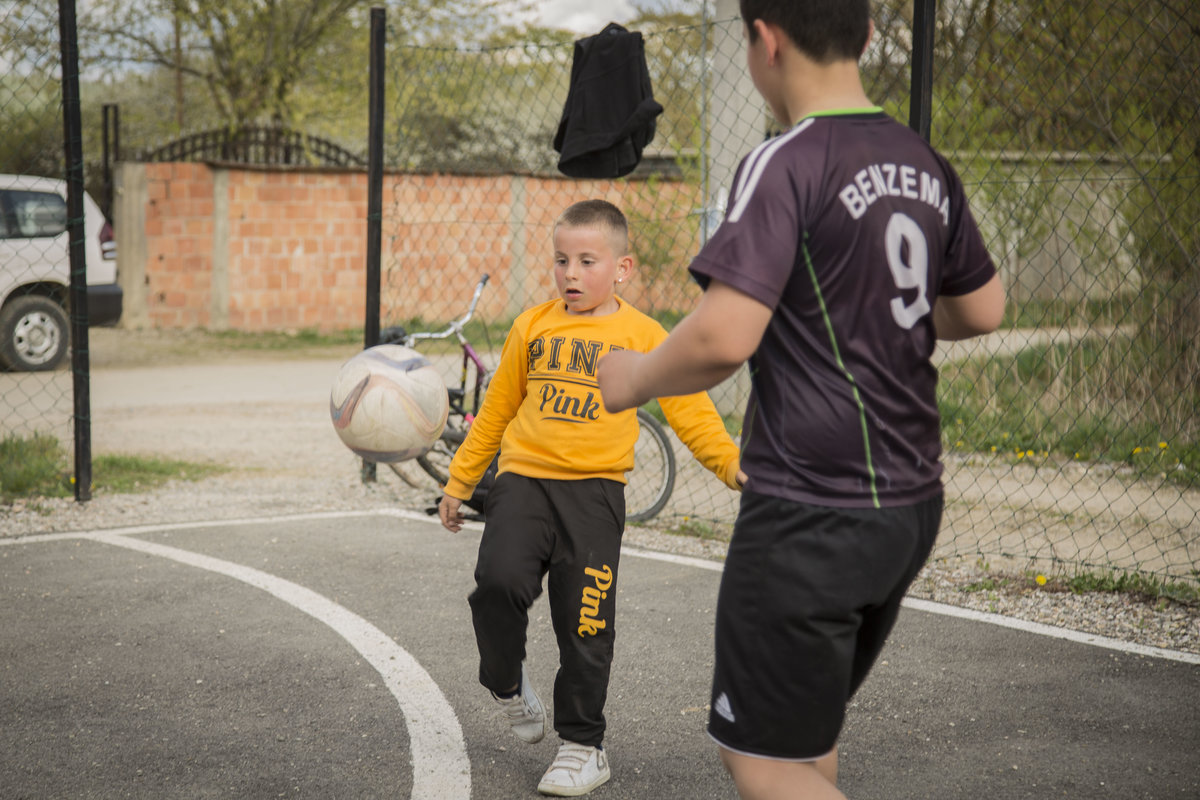
It has certainly been a big success as far as Leonid and his friends are concerned:
“Children from the neighboring villages that don’t have such playgrounds should come here to play. And if their municipalities are able to build such playgrounds for them, they should do so.
“For me, Vidaje/Vidanje is the best village to live in.”
Watch a short video of the community and playground below.
 UN
UN United Nations Peacekeeping
United Nations Peacekeeping



